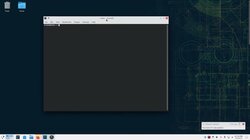Linux Distro Reviews: openSUSE Tumbleweed — Part 2
Security is only a good thing if it’s not so restrictive that people begin disabling features for the sake of convenience, and this is where openSUSE’s disadvantages begin to shine through.
Of all the distros that I have tried to date (Fedora, Manjaro, openSUSE, KDE Neon, Pop!_OS, Kubuntu, and Zorin OS), openSUSE’s security policies are by far the most restrictive. Want to adjust your network settings? You’ll need to enter your password. Want to install a Flatpak app? You’ll need to enter your password. Change your timezone? Enter your password.
What’s more, the default firewall settings are so strict that printer discovery doesn’t work out of the box. To be clear, every single other distro I’ve tried automatically discovers my HP printer on my network and lets me print without installing any additional drivers.
In contrast, openSUSE cannot even discover the printer without changing the firewall profile from the default ‘Public’ to ‘Home,’ or adding the mDNS service to the ‘Public’ profile. Even when making sure mDNS is enabled, openSUSE still requires “hplip” software/driver package installed.
Is it possible to overcome these issues? Yes. But many people, especially less technical users, give up before figuring out how to jump through all these hoops. In fact, a quick look at openSUSE’s Reddit will reveal that two common solutions to printing on openSUSE are a) disable the firewall altogether or b) “don’t print on openSUSE.” Seriously…I have seen that advice multiple times…”don’t print on openSUSE.”
The issues with printing on openSUSE are irritating enough that Linux creator Linus Torvalds famously dumped openSUSE and switched to Fedora because printing was just too hard to bother with. Fans of the distro will point out that it has gotten better since that day…but it’s still not good enough for the average desktop user.

